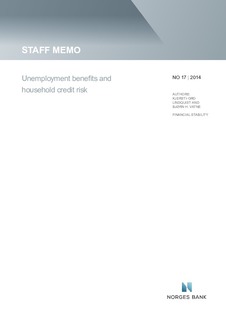| dc.contributor.author | Lindquist, Kjersti-Gro | |
| dc.contributor.author | Vatne, Bjørn Helge | |
| dc.date.accessioned | 2018-07-31T07:41:08Z | |
| dc.date.available | 2018-07-31T07:41:08Z | |
| dc.date.issued | 2014 | |
| dc.identifier.isbn | 978-82-7553-838-1 | |
| dc.identifier.issn | 1504-2596 | |
| dc.identifier.uri | http://hdl.handle.net/11250/2506901 | |
| dc.description.abstract | In Norway the wage replacement rate, i.e. the proportion of wage income that is replaced by unemployment benefit, falls with high income. At the same time, the distribution of debt is skewed towards high-income earners. This paper maps out the wage replacement rate across Norwegian households and discuss credit risk in the event of unemployment. | nb_NO |
| dc.language.iso | eng | nb_NO |
| dc.publisher | Norges Bank | nb_NO |
| dc.relation.ispartofseries | Staff Memo;17/2014 | |
| dc.rights | Attribution-NonCommercial-NoDerivatives 4.0 Internasjonal | * |
| dc.rights.uri | http://creativecommons.org/licenses/by-nc-nd/4.0/deed.no | * |
| dc.title | Unemployment Benefits and Household Credit Risk | nb_NO |
| dc.type | Working paper | nb_NO |
| dc.subject.nsi | VDP::Samfunnsvitenskap: 200::Økonomi: 210 | nb_NO |
| dc.source.pagenumber | 10 | nb_NO |

